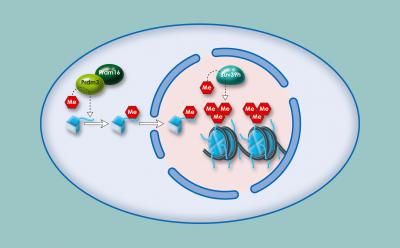New insights into how the oncogenic protein c-Myc regulates cell growth
Advertisement
A greatly increased synthesis of new proteins is one of the first and most important events that occur in both normal and tumour cells upon growth stimulation. The new proteins are formed in the part of the cell known as the ribosome. Assembly of ribosomes requires coordinated activation of genes that is mainly performed by two enzymes, RNA polymerase I and II. These two enzymes are directed by "activators" to the genes that they are to activate.
One such activator is the c-Myc protein, already known to activate the genes involved in cell growth via RNA polymerase II. In many cancers the activity of c-Myc is abnormally high. Scientists have previously believed that different types of activator direct the RNA polymerase I and II enzymes to their respective target genes.
Now, however, researchers at Södertörn University College, Karolinska Institutet, the Swedish University of Agricultural Sciences and the German Cancer Research Centre in Heidelberg reveal that c-Myc also activates genes for ribosome components via RNA polymerase I.
The discovery that c-Myc activates both RNA polymerase I and II can explain how all the various components of the ribosome are produced in the correct relative amounts and at the right time. As disruption of this balance can elicit tumour development, this discovery gives new and important insights into how abnormal c-Myc activity can cause cancer.
Original Publication: A. Arabi, S. Wu, K. Ridderstråle, H. Bierhoff, C. Shiue, K. Fatyol, S. Fahlén, P. Hydbring, O. Söderberg, I. Grummt, L.-G. Larsson, A. P. H. Wright; "c-Myc associates with ribosomal DNA and activates RNA polymerase I transcription", Nature Cell Biology 2005.

















































